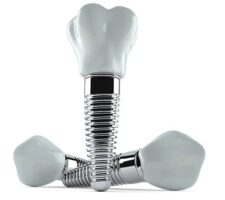Tooth extraction might seem daunting, but it can be a straightforward process. Before the extraction, your dentist will numb the area to minimize discomfort. You may feel some pressure during the procedure, but you shouldn’t experience pain. After the tooth is removed, you’ll receive instructions for home care, such as how to manage bleeding and swelling. It’s essential to rest and avoid certain foods to promote healing. Maintaining oral hygiene and following your dentist’s advice can help ensure a smooth recovery. Knowing these steps can ease your anxiety about the procedure.
Before the Tooth Extraction
Preparation is key to ensuring a smooth tooth extraction experience. Here’s what you can anticipate before heading to the dental office:
Consultation
Your dentist will initially assess your situation through a thorough dental examination. This usually involves taking X-rays to determine the best way to remove the tooth and to check its proximity to nerves and other teeth. The consultation is a great time to ask questions and discuss any concerns about the procedure.
Pre-Procedure Instructions
-
Follow dietary restrictions, such as fasting, if advised.
-
Disclose all medications and health conditions to your dentist.
-
Arrange for transportation to and from the appointment if sedation is used.
You’ll likely receive specific instructions to follow in the days leading up to your extraction. These might include avoiding food and drink a few hours before the procedure, stopping certain medications, or arranging a ride home post-extraction. Following these recommendations closely will help ensure a successful procedure and recovery.
Anxiety Management
-
Discuss sedation options with your dentist.
-
Consider deep breathing exercises or listening to calming music before the appointment.
-
Bring a friend or family member for support if you’re feeling nervous.
If you’re feeling anxious about the extraction, it’s perfectly normal. Dentists are well-versed in helping patients manage their fears. Consider sedation options that can keep you more relaxed during the extraction, such as nitrous oxide (laughing gas) or oral sedatives. It’s important to weigh the pros and cons of each option with your dentist, so you can choose what’s most comfortable for you.
The Day of the Procedure
Arriving at the dental office for extraction can make you nervous, but knowing what will happen step-by-step can alleviate some stress. Here’s how the day might unfold:
The Numbing Process
-
Local anesthesia will be administered to reduce any pain during the procedure.
-
The dentist will check the effectiveness of the anesthesia before proceeding.
Once you’re settled into the dentist’s chair, the first order of business will be numbing the extraction area. This is usually done with a local anesthetic, ensuring you won’t feel any pain during the procedure. You might feel a slight pinch from the needle, but this is typically the most discomfort you’ll experience. Once numb, the dentist might test the area to ensure you’re comfortable and ready to proceed.
The Extraction
There are two main types of extractions: simple and surgical. A simple extraction involves loosing and removing a visible tooth with dental tools. On the other hand, a surgical extraction is more complex and might be necessary for teeth that haven’t fully erupted or are broken off at the gum line.
-
Simple Extraction: This involves your dentist maneuvering the tooth back and forth to loosen it. You might feel pressure during this process, but the anesthetic ensures you don’t feel pain.
-
Surgical Extraction: In this case, the dentist may need to make an incision in the gum to access the tooth, possibly removing some bone that covers or surrounds it. The tooth may be divided into pieces for easier removal.
Each type of extraction typically takes between 20 and 40 minutes to complete. Your dentist will walk you through each step of the process, ensuring you’re as comfortable as possible.
After the Tooth Extraction
How you care for your mouth after the extraction is crucial to your recovery. Here’s what you can expect and how you can prepare:
Post-Operative Instructions
-
Avoid vigorous rinsing or spitting for 24 hours to protect the blood clot.
-
Use prescribed or recommended pain relievers to manage discomfort.
-
Follow specific cleaning instructions for the days following the extraction.
Your dentist will provide you with a set of post-procedure care instructions. These often include guidelines on what to eat and avoid, how to manage pain and swelling, and how to care for the extraction site. It’s essential to follow these instructions closely to avoid any complications.
Pain Management
-
Take any prescribed pain medication as directed.
-
Use an ice pack to reduce swelling in the first 24 hours.
-
Avoid strenuous activity to minimize discomfort.
It’s normal to experience some discomfort once the anesthesia wears off. Over-the-counter pain medications are typically sufficient to manage this, though your dentist may prescribe something more substantial if necessary. Applying an ice pack to the affected area can also help reduce swelling and ease pain.
Dietary Adjustments
-
Opt for soft foods such as yogurt, mashed potatoes, and smoothies.
-
Avoid hot, spicy, or crunchy foods that could irritate the extraction site.
-
Stay hydrated with plenty of water, but avoid using straws.
Soft foods like yogurt, applesauce, and mashed potatoes are recommended for the first few days after an extraction. It’s best to avoid anything that can irritate the extraction site, such as spicy foods, alcohol, and hot beverages. Staying hydrated by drinking plenty of water is also essential to a swift recovery.
Caring for Your Mouth
-
Rinse gently with a saltwater solution after meals.
-
Brush your teeth carefully, avoiding the extraction site initially.
-
Avoid smoking to ensure proper healing of the area.
You should avoid vigorously rinsing your mouth, using straws, or smoking for the first 24 hours, as these actions can dislodge the blood clot forming in the extraction site—this clot is crucial for healing. Gently rinsing with a saltwater solution after meals can help keep the area clean.
Signs of Infection to Watch Out For
While most extractions heal without problems, it’s essential to know the signs of an infection so you can address any issues quickly. Contact your dentist immediately if you notice increased pain, swelling, pus, or a fever. These symptoms could indicate an infection that requires treatment.
Long-Term Oral Care
A successful extraction doesn’t mean your dental care ends there. Maintaining good oral hygiene is vital to prevent further dental issues. Brushing twice daily, flossing, and regular dental checkups will help keep your smile healthy.
When to Resume Normal Activities
You’re advised to avoid strenuous activities for at least 24 hours following the extraction. Depending on your unique situation, your dentist may provide more personalized recommendations on when you can return to your routine.
Follow-Up Appointments
-
Your dentist may schedule a follow-up visit to check the healing process.
-
Stitches, if used, might need to be removed during this appointment.
Sometimes, you’ll need a follow-up visit to ensure proper healing. This might involve checking whether stitches need removal or simply examining to confirm everything is on track.
Options After Extraction
Once the extraction site has healed, consider replacing the missing tooth, especially if it’s visible or affects your bite. Options might include bridges, dentures, or dental implants. Your dentist can offer advice based on your unique needs and preferences.
Seeking Professional Help in Your Area
If you’re considering getting an extraction, you’ll need a reliable dental professional. Seeking dental services in Bronx can connect you with skilled practitioners who can guide you throughout the process and address any dental concerns.
Local Dental Solutions
For those needing tooth extractions in The Bronx, finding a qualified dentist who can provide a comfortable and efficient experience is essential. Research and ask for recommendations to ensure you’re in capable hands.
Community Dental Resources
Accessing Bronx dentist services can be a key factor in maintaining dental health, especially when specific procedures like extractions are necessary. The availability of skilled professionals in your area can make the entire process more manageable.
Final Thoughts
Understanding what to expect from a tooth extraction, from preparation to recovery, can greatly reduce any anxiety surrounding the procedure. Following the guidance of your dental team and taking proper care of your mouth post-extraction will contribute to a smooth and successful recovery. With the right approach and professional help, you’ll be back to enjoying your favorite foods and showing off your smile in.



